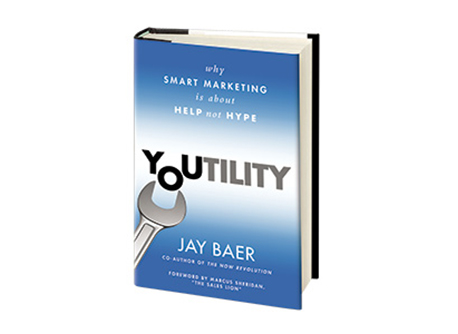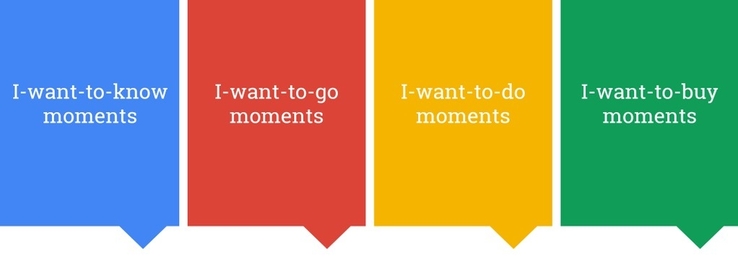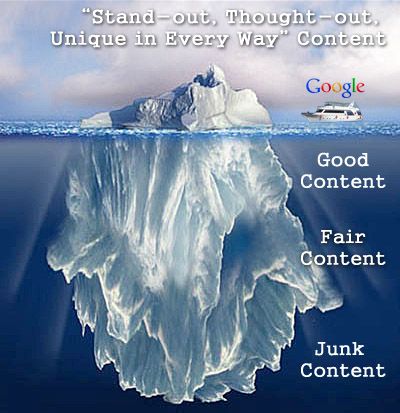
Why Meaning Will Ultimately Determine Your Brand's Content Marketing Success
The author's views are entirely their own (excluding the unlikely event of hypnosis) and may not always reflect the views of Moz.
In 2009 Fletcher Cleaves was a top high school football prospect ready for the next level, eager to do in college what he'd done in high school: rack up yards as a running back. But before Cleaves could realize his dream of playing at the next level, a texting, distracted driver plowed into the car he was driving, forever changing his life's trajectory.
Today, Cleaves, paralyzed from the chest down as a result of the accident, serves as a tragic reminder of something as seemingly harmless as texting and driving can alter lives. It's impossible to watch the video below and not immediately realize three important facts:
- Texting and driving is a big deal.
- This young man was unfairly robbed of his future.
- This big brand nailed the messaging.
Telecommunications brands (and airline companies) enjoy some of the worst customer service ratings on the planet. And to make matters worse, their core messaging via print, radio and online ads is equally atrocious, doing very little to make would-be customers give them a second look.
However, with the latest iteration of the "It Can Wait" campaign, which is rich with stories and features stunning video recreation, AT&T did something all brands looking to make a mark in content marketing should copy: They delivered content with meaning.
The end of utility
We live in a world rich in information and teeming with data. The ability to analyze the results of our content marketing efforts, even in real-time, is as astonishing as it is mesmerizing and revealing. Our teams can know, before a word is written, a design delivered or a report is generated what the results should be based on the assigned key performance indicators (KPIs). The automation present in online marketing can make it feel as though the world we inhabit is more fantasy than reality, as if the press of a button will always lead to the results we expect.
Yet we still struggle with how to create content that commands attention, that nudges prospects to take immediate action, that leads to the vast majority of our customers moving from brand loyalists to brand ambassadors and advocates.
Why is this?
I propose that we've misread the tea leaves.
In the last three years, marketers (even this one) have sung from the rooftops that your content must be useful and relevant, have immediacy, and deliver impact. And if you followed this advice, you likely found a modicum of success, if only for a short time.
How could we expect any different when the customers we're all clamoring for are being bombarded with thousands of messages every day? When that happens, even the most resonant voices get drowned out. And for those of us who've thrown our hats into the usefulness and relevance ring, we've largely committed ourselves to a life of struggle that's tough to recover from.
This line of thinking occurred to me in July of 2014, as I finished Jay Baer's book Youtility during the plane ride home from MozCon 2014. I agree with and applaud Baer for bringing to light the novel term, which he defines as "Marketing that's wanted by customers. Youtility is massively useful information, provided for free, that creates long-term trust and kinship between your company and your customers."

But I'm afraid this ship has largely sailed. Not because usefulness is any less importance, but because the threshold was so low that every brand and their sister jumped online via websites, social media, forums, message boards and everywhere else with information that temporarily sated prospects' appetites but did little to create a lasting impression.
If your desire is to create a brand whose content is sought-after and, indeed, clamored for, you must bake meaning into your content.
Without meaning, your brand's content is adrift
Like many of you, most of my early content-creation efforts were centered around pleasing Google, whereby my inspiration was for thinking in terms of queries:
1: Informational: Where prospects are likely to look for information
2: Navigational: What prospects are likely to be looking for on those sites
3: Transactional: What prospects are ready/likely to buy
The result of this thinking (outlined in the graphic below) was the myriad 350-word posts that now clog the web.

There's a better way.
It's time your content led with meaning, and that process begins with a revamping of the thought process surrounding content ideation and content creation. Why is that important?
We cannot win otherwise, says Bill Sebald, founder of Greenlane SEO, a Pennsylvania-based SEO firm.
"Think about it," he says. "Many brands are still writing low-quality articles that deliver little value and have zero impact to their customers or prospects. That's bad enough, but when you consider the prevalence of these thin content pieces, is there any wonder how the Panda Update evokes fear in these same brands? Being useful is great. It can and does work fine, for a while. But what you want as a brand is lasting impact, people seeking you out, top-of-mind awareness. As it regards content marketing, that only happens when your brand is known for delivering content with meaning, which sticks in the gut of the folks who read it."

(image source)
In All Your Content Doesn’t Matter Without Meaning, Sebald shared five easy-to-follow questions he thinks brands should ask themselves as they work to create content with meaning:
- Did I say anything new?
- Did I say something that will get someone’s attention?
- Is the content part of a strategy?
- Am I really an expert in this topic?
- Did my copy focus on relationships Google knows about?
Any brand committed to asking themselves at least three of those questions before any content is created is swimming in the deep end of the pool, having moved away from the pack and on the way to delivering meaningful content.
After reading Sebald's post, I dug into my notes to discern what I think it takes to win the race for content marketings next frontier.
If your brand is looking to separate from the back, I'd like to share three ideas I've seen work well for brands of all sizes, even in boring verticals, such as HVAC and plumbing.
1. Be where your prospects are, at the time they need your information, with a message so good they cannot ignore you.
As a lifelong angler, I'm keen to compare marketing to bass fishing, whereby bait and location are pretty much all that matters. Or so I thought, until one day I got my hands on an underwater camera and could see fish swimming all around my lure, which they ignored.

(image source)
That's when I realized bait and location are only as good as timing.
No matter how great the quality of my tackle or how well-placed was my lure, the fish must be ready to bite for me to find success.
How your brand can put this thinking to work: Personalize your company's blog by adding bi-weekly or monthly interviews with people who've used your services/products, and who can share information that's hyper-relevant to issues prospects are likely dealing with at the time.
For example, in the month of October a pool company might highlight a customer who maintains their own pool but who hires a pool company for winterization help. Or, in the same month, an accountant might share a video blog of a couple who owns a small business and does a great job of staying on top of expenses.
You might notice that I never said the person spotlighted mentions the brand or even uses them for service. That's immaterial. What's key is (a) the person shares a compelling story that's (b) delivered on your blog and (c) is information they can use right away for where they are in the decision-making process. (It's important that the content not appear salesy because too often the prospects who're most likely to need your services aren't even looking for those services. They're simply suckers for a good story.)
2. Make them feel confident about what the brand stands for, not simply the purchase they might someday make.
One of my favorite words from college is ubiquity. Get to know this word if your brand is to produce meaningful content. Your brand should show up in all the places and for all the things prospects would expect to find you ranking for, conversing about and, more important, being shared by others for.
To instill your content with meaning, it must show up in places and for things prospects likely would expect to find it showing up for. This isn't simply about ubiquity. It shows empathy.
A brand that does this better than most is Seattle-based REI. It's amazing the range of terms they rank highly for. If they sell it, there's a great chance REI shows up somewhere in or near the top of the SERPs for the category.
For example, I simply typed "snow goggles" into the search box, and voila, look who shows up. Also, look who they show up above. Better yet, imagine all of the large eyewear brands they're outcompeting for this position.

By clicking on the query, you immediately see why they're at the top of the SERPS: The content is rich in visuals and answers every question a prospect would ever have surrounding snow goggles.
I discovered the strength of REI's content ideation and creation efforts in 2013, while completing a content strategy roadmap for one of the largest two-way radio manufacturers in the world.
Despite the brand's heft, REI was always ahead of them in the SERPs, with social shares, in online conversations, etc.

San Francisco, I understood why REI had content ubiquity: "From the start, they did something right that continues to [work in their favor]," says Colman, who works for Facebook in the areas of product user experience and content strategy. "They simply focused on creating and sharing the best content for their users, not on marketing."
Those words resonated with me, as they should with you.
How your brand can put this thinking to work
Stop thinking like a marketer and start thinking like a customer. I've written before about keeping and sharing a document that lists the questions and comments prospects and customers share during calls, on social media and via any any other platforms used to capture customer sentiment.
This document could form the basis for content that's written and shared by your marketing team. However, your brand must go farther to deliver meaning through it's content.
An approach I've recommended to clients and seen good success with works as follows:
- Focus on creating one big piece of content per month: This pulls your team away from thinking about creating content for content's sake. It also ensures that the team is able to marshal its resources to research, design, and create content with meaning. The goal with each big content piece is to answer every reasonable question and/or objection a prospect might have before doing business with you. For example, an SEO agency might, in month one, create a big content piece titled "How Small Companies Can Win With Personalized Content," detailing in depth how becoming a popular local expert can earn the brand links, gain press attention and increase overall business. In month two, the same agency might go all-in on a post titled "How Your Mom and Pop Shop Can Beat the Big Guys," whereby they outline an actionable plan for how to smartly use their blog, one social media platform and a small PPC budget to generate awareness, site visits, links and earned media. Prospects are likely to see the agency as the one to help get them over the hump.
- Ignore the competition: Instead of checking the SERPs to see what's ranking highest for content in your vertical on the topic you wish to create, look at the content that's being shared outside your area by brands that have no relation to your vertical. You cannot win long-term by copying a strategy that your competition is better equipped to deploy, so don't emulate them. Look at what non-competing brands are doing to deliver meaningful content. It could be a TV show, even, which you study for how characters are developed. Think of the regional car dealerships who grew to be household names in the late '90s by delivering sitcom-style commercials and ads based off popular TV shows that meant something to the audience. Your brand can find similar inspiration by looking outside your area.
- Make consistency a mainstay: REI wins at content marketing in large part because the brand is consistent. No matter where you find their content, it's thorough and deserving of its place in the pantheon of content marketers. Don't simply pour your heart into the big content piece, then allow everything else to fall by the wayside. Your brand must imbue every area, all departments and any content shared with meaning. This effort takes shape as the development, design and product teams placing users in the driver's seat early on in the process; the marketing team only sharing information that, first and foremost, addresses the needs of the audience; the customer service team creating customer happiness, not quashing complaints; and sales team members frequently checking on prospects, even when no sale is imminent.
The goal here is to, as the saying goes, be so good they cannot ignore you.
3. Help your customers become the best versions of themselves
It's likely you've seen the graphic below online before, maybe even on the Buffer Blog, which is where I found it. The image expertly sums up where I think the brands who ultimately win at content marketing will have to go: Turning away from their own interests and keying in on how the brand can better enable the customer to (a) better do what they endeavor to do and (b) become a version of themselves they never imagined possible.

(image source)
Sound far-fetched? Imagine the car commercials showing an average Joe who is all of a sudden a handsome hero admired by beautiful passersby because of his new wheels.
Your brand can become the means-something-to-prospects darling of its industry, too, with the adoption of three simple steps applied with conviction:
- Personalization — Develop people (at least one, but a few would be even better) in your company who can become the public face of the brand, who make it easier for prospects to form a connection with the company and more likely that content is shared and amplified more frequently as their popularity increases.
- Become a helper, not a hero — Stop thinking that your content or your product or your service needs to be life-changing to get the attention of prospects. They desire to be the heroes and sheroes of their own journey; they simply need an assist from you to create a lasting bond they won't soon forget about.
- Make users' stories a core of your marketing efforts — Let's get this straight: No one gives a damn about your story. Your brand's story only becomes relevant when prospects have been made to feel important, special by you then desire to explore further the meaning behind the brands. How do you accomplish that task? By integrating the stories of customers into your marketing efforts.
How your brand can put this thinking to work
The importance of using an engaging personality to deliver meaning for your content cannot be overstated. In fact, it's likely the shortest path to winning attention and garnering success.
I'll use Canadian personal trainer Dean Somerset as an example. I discovered Somerset a few years ago when he dropped a few helpful knowledge bombs in the comments of a fitness blog I was reading. I then found a link to his blog, which I have now become a religious follower of. Over the years, we've traded numerous emails, interacted myriad times via Twitter, Facebook, and Instagram, and I've even hired him for training assessments.
Why?
Aside from being brilliant, he's a goofball who takes his work, not himself, too seriously.
 (image source)
(image source)
But most important, the core of every post he creates or video he shares or every Facebook Q&A he offers is helping others become better at physical health and physical fitness than they ever imagined they could.
The result is that, in a relatively short time span, Somerset has become one of the top young minds in the fitness industry, in no small part because he creates heroes with nearly every piece of content he shares. (If you doubt me, watch the video below.)
Don't think for a second that your brand can't do the same:
- Look for members on your team who have personality and who are uniquely qualified to create content (e.g., video, text, SlideShare, etc.) on topics readers care about. Empower them to share, converse and engage around this content, whether locally (e.g., Meetups) nationally (e.g., conferences) or online (e.g., blogs, social media, etc.).
- The script these experts must work from, for everything they share, should begin with the question, "How can this [blog, video, etc.] help at least one person do something better tomorrow that they cannot yet do today?" Answer this question, and you won't simply create meaning for your content, you'll create meaning, relevance and top-of-mind awareness for the brand as well.
It's hard for a brand to escape being successful if this mindset is ever-present.
The last area we'll look at is storytelling, which is very popular in content marketing. And almost no one gets it right.
Yes, people do love stories. They eat them up, especially compelling, heart-wrenching stories or, even better, tales of tremendous uplift.
However, people are not interested in your brand's story — at least not yet.
The only story brands should be telling are those of their users. The brands who have realized this are leaving the brand storytellers in the dust, while turning up the dial on meaning and significance to the audience.
A great example is Patagonia and their Worn Wear video series. Instead of creating ads showcasing the durability of their products, they filmed actual customers who've been using the same Patagonia products for years and who wouldn't trade the brand's products for those of any other company.
These are rabid fans, loyal to the nth degree.
Don't drink the brand storytelling Kool-Aid. Tell the stories of your users.
Identify a handful of ardent fans of your product or service, then reach out to them via phone to ask if they'd mind being part of a short-video series you're doing to showcase people and brands doing great things. (I mentioned a similar approach earlier, which is ideal for the smallest companies. I think this effort plays into a much broader strategy for larger brands.)
Depending on your budget and their location, you could either have a small camera crew visit their office or walk them through how to shoot what you need on their mobile devices. You could also provide them with a script.
Here's the kicker: During the video, they are not allowed to talk about your brand, product or service in any way shape or form.
The goal is to get video of them going about their day, at home and at work, as they share what makes them tick, what's important to them, who they are and why they do what they do.
This is their story, remember? And as such, your brand is a bit player, not a/the star. Also, the lack of a mention washes away any suspicion viewers might have of your brand's motives. Most important, however, you get a real, authentic success story on your website and domain, so the implication is that your brand was a helper in this heroic journey.
If this post accomplishes anything, my wish is that it makes clear how necessary and how realistic it is for your brand to create meaningful content.



Comments
Please keep your comments TAGFEE by following the community etiquette
Comments are closed. Got a burning question? Head to our Q&A section to start a new conversation.